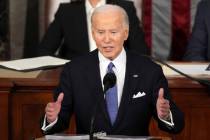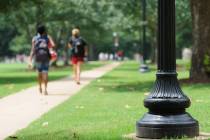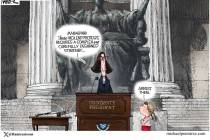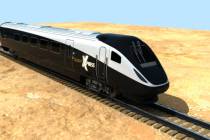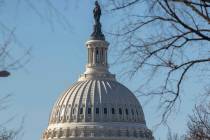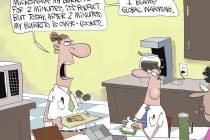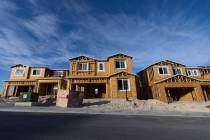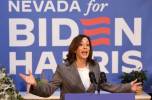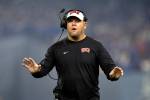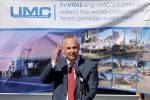Region’s condition requires addition of UNLV med school
Any emergency room doctor will tell you that a patient who presents with multiple injuries requires multiple interventions to save his life. The state of medicine in Southern Nevada is just such a patient. Greater Las Vegas dramatically underperforms compared with other metropolitan areas — large and small — across the U.S., and its anemic medical care profoundly underserves the state’s residents.
The problem requires a comprehensive, regionwide intervention that fills what are serious gaps in medical education, medical service, the provision of care, and ancillary industries such as biotech and medical diagnostics. In any clinical setting, the best information leads to the best treatment. To understand the state of medicine in Nevada, look to the 2013 State Physician Workforce Databook, published by the Association of American Medical Colleges. The comprehensive report relies on data from the American Medical Association.
The AAMC databook paints a bleak picture that should alarm every Nevada resident.
Nevada ranks: 46th in active physicians; 46th in active patient care physicians; 47th in primary care physicians; and last in MD students per capita among states with MD-granting medical schools (9.5 MD students per 100,000 residents).
The facts are clear: Nevada’s medical capacity is in serious condition and needs immediate care.
Mitchell Forman, the founding Dean of Touro University Nevada, the state’s only osteopathic college, noted in a Review-Journal op-ed that Nevada’s graduate medical education is woefully lacking. He is right. Nevada ranks 46th in per capita medical residents and fellows. However, his implication that simply expanding GME and then relying on Nevada’s existing medical infrastructure can solve the state’s health care deficit is just flat wrong.
Since 2007, three years after Touro opened, Nevada has done nothing to improve its ranking in physicians per capita. It has dropped from 45th to 46th in active physicians, 46th to 47th in primary care physicians and remained 46th in residents and fellows.
In fact, from 2001 to 2011, Nevada saw the second-largest percent increase nationally in graduate medical education — 45 percent. Yet the state still suffers from serious physician shortages. Touro’s efforts to train more osteopathic physicians have been helpful to a point, but that has not remedied the health care workforce crisis — a crisis extending to specialties, as well. Nevada ranks among the bottom five in physicians per capita in pediatrics, orthopedics, ophthalmology and psychiatry.
Nevada maintains a physician workforce pressed to serve its growing population and relies more on internationally trained doctors than almost any other state. Yes, Nevada needs more GME slots. It also needs an allopathic (MD-granting) medical school at UNLV to serve the state’s largest metro area. Such a public MD-granting institution would build a comprehensive, booming, state-of-the-art medical economy — in concert with existing medical schools, hospitals, patient care centers, diagnostic facilities and other scientific research institutions.
A recent study from Tripp/Umbach commissioned by the Lincy Institute illustrates the economic impact of a UNLV medical school not just for Las Vegas, but the entire state. It will add 8,000 jobs to Southern Nevada by 2030 — as well as an additional 4,000 jobs to Northern Nevada as the medical capacity of the state expands.
The UNLV medical school will generate tens of millions of dollars annually in federal research — another category where Nevada currently ranks at the bottom. Further, the creation of a UNLV medical school should generate $1.2 billion in economic activity by 2030.
Finally, a new UNLV medical school presents an opportunity for additional funding for the very GME that Dean Forman suggests. Expanded GME positions may not all flow to Touro; however, any medical professional in Nevada who recognizes the serious physician shortages should welcome more opportunities to train doctors, regardless of which institution benefits directly. Why? Because all institutions will see benefits from an expanding medical economy in Southern Nevada.
Arguing Las Vegas does not need a UNLV medical school fails to recognize its many benefits. Other U.S. metro areas of varying sizes understand these benefits. In recent years, Austin and Lubbock, Texas; Scranton, Penn.; Roanoke, Va.; Riverside, Calif.; Miami and Orlando, Fla.; and others have reaped the rewards of establishing allopathic medical schools.
It is time Las Vegas seizes the same opportunity. Right now, the nearest MD-granting institution is in another state. In fact, the nearest half dozen are out of state.
The bottom line is that other U.S. cities address their health care needs by building allopathic medical schools. Las Vegas needs more GME, but a good clinician can tell you the region’s symptoms require a much larger intervention.
John Hudak is a fellow in the Center for Effective Public Management and managing editor of the FixGov blog at the Brookings Institution. He also serves as a visiting scholar at UNLV’s Brookings Mountain West.









